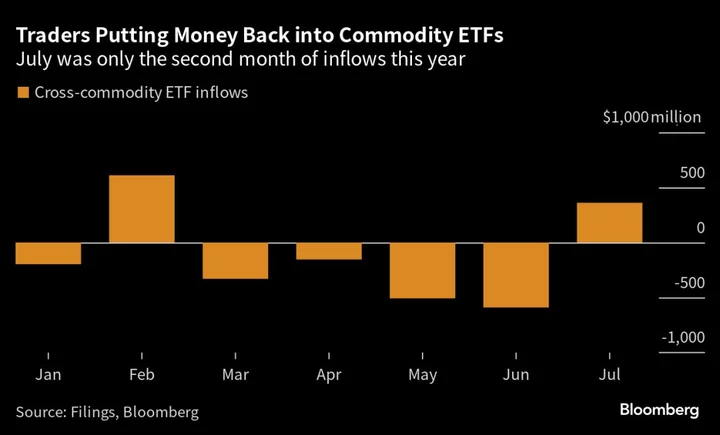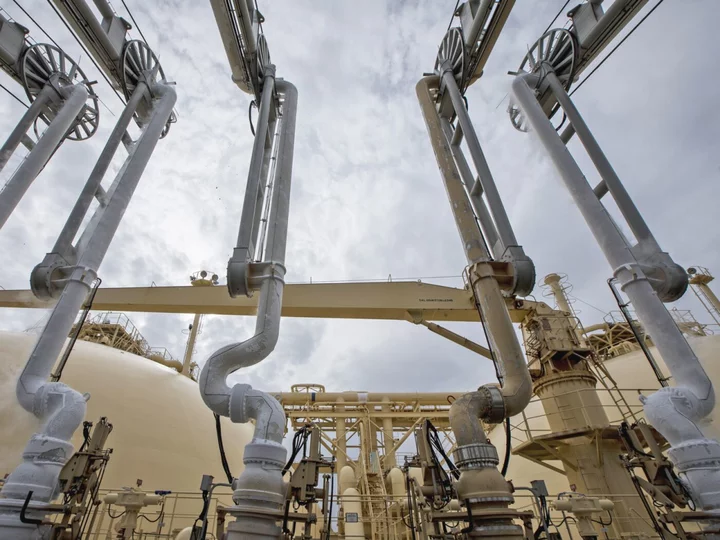Traders have piled into exchange-traded funds covering oil to metals and grains as investors wager that the global economy is set to avoid a painful recession, despite the prospect of higher interest rates.
More than $350 million was put into 20 ETFs that track broad-based commodity indexes in July, only the second month of inflows this year, according to data compiled by Bloomberg. That follows four months of withdrawals.
“The past year has seen a mass exodus out of commodity index products due to fears of recession and falling inflation expectations,” said Ryan Fitzmaurice, lead index trader at commodities brokerage Marex Group Plc. “However, asset allocators have started rotating back into commodity index ETFs.”
The largest cross-commodity fund, Invesco Optimum Yield Diversified Commodity Strategy No K-1 ETF, continued to see inflows at the start of this month, taking in around $33 million on Aug. 1.
The Bloomberg Commodity Spot Index, a gauge of the value of the world’s raw materials, last month rose 5.8%, the biggest advance since March 2022. The gains were led by oil and its derivative products, which have climbed on supply cuts from key OPEC+ producers and an improved macroeconomic outlook. Other commodities such as copper, gold, cotton and corn also rose.
China’s uncertain economic outlook is still presenting headwinds and investors are pulling money from some ETFs. Oil funds recently posted the largest week of outflows in more than a year after prices rallied above $80 a barrel.
More broadly, the estimated value of open interest across global commodity markets rose through late July, reaching a 13-month high of $1.31 trillion, according to a note from JPMorgan Chase & Co. dated July 31. That includes $566 billion for energy markets as of July 28, the bank said.
“Our economists note that positive surprises on growth and inflation are spurring soft-landing hopes, and we continue to see commodities as an under-loved asset class,” analysts including Tracey Allen and Natasha Kaneva wrote.
(Updates with flows into the largest cross-commodity fund in fourth paragraph.)









